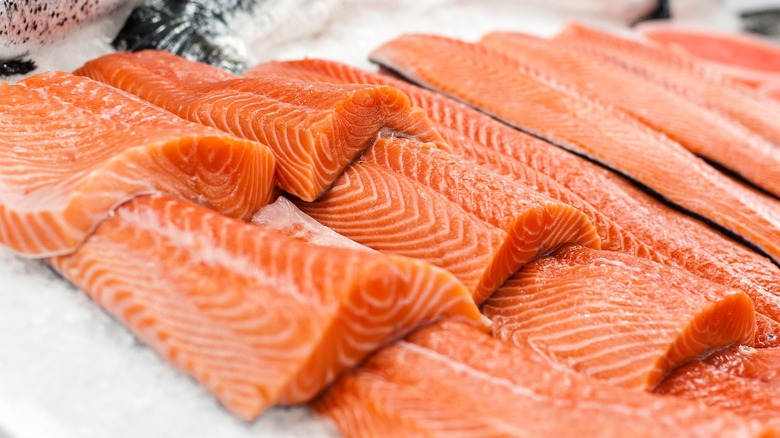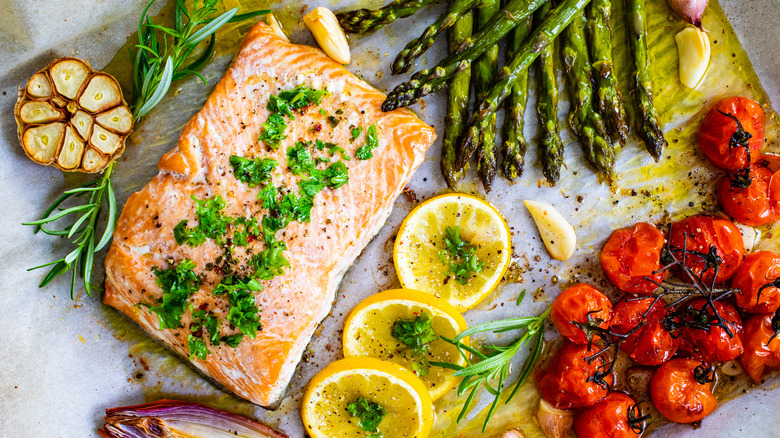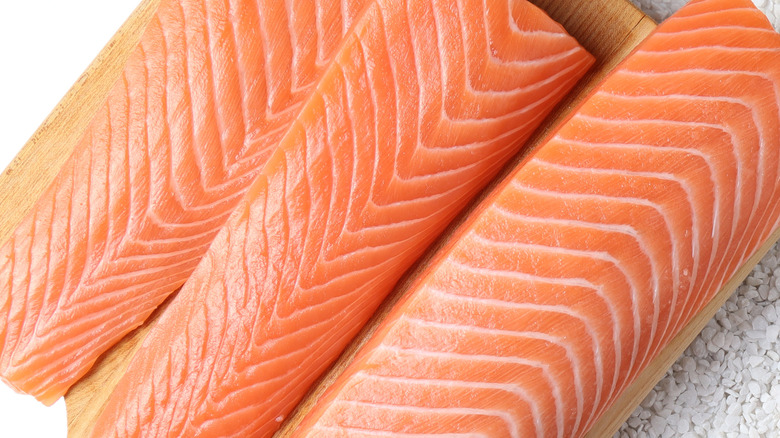Why You're Better Off Eating Raw Salmon Than Undercooked
Salmon sashimi, crispy-skinned salmon, poached salmon, gravlax, salmon salad — there are countless ways to enjoy salmon, each and every one of them delicious. It's a versatile, healthy, and flavorful fish that's the star of so many mouth-watering recipes and can be eaten any which way. Well, any which way except one.
Salmon is one of those go-to favorite fish across the board, but it can also be a bit confusing simply because there are so many ways to prepare it. What's the best way to eat salmon? Can you eat any salmon raw, or does it have to be sushi-grade? What temperature should it be if you cook it? And if you can eat it raw, is it even possible to undercook it?
These are questions many of us have wondered along the way if we've forayed into the versatility of salmon, whether exploring restaurant menus or experimenting in our own kitchens. So we're here to set the record straight on how to properly prepare and eat it, and what's safe and what isn't — so you can take the guesswork out and simply savor your salmon.
Undercooked salmon sits in the danger zone
You may think that with something that can safely be eaten raw, it doesn't matter if you undercook it. But undercooking salmon is definitely a thing, and you definitely don't want to do it. Why? It all comes down to specific temperatures and what happens within them.
As long as it's stored properly, most salmon can be eaten raw without fear of contamination — that's because pretty much anything you buy at the grocery store or order in a restaurant will have been flash-frozen (ideally to at least -31°F, or all the way down to -20°F) to kill off any parasites and prevent any pathogens from growing. If you're cooking your salmon, as long as it reaches 145ºF, it's safe to eat; this is the internal temperature threshold that, like freezing, kills off bacteria and contaminants.
It's that temperature range in between that's the problem because that zone between 40ºF and 140ºF is where pathogens and bacteria thrive. So, undercooked salmon — aka, salmon that's not raw but also not cooked to a safe temperature — runs the highest risk of being contaminated with parasites or viruses that you do not want in your body.
How to make sure salmon is safe to eat raw
While salmon is okay to eat raw assuming food safety standards are met, like all raw seafood, there's always a risk of contamination. So it's important to choose wisely when you plan to enjoy your salmon as-is. Obviously, the higher quality and the fresher the fish, the better for raw consumption, so stick to grocery stores or fish markets you trust.
It's generally recommended to buy farm-raised salmon to consume raw since wild-caught is at a higher risk for parasites. And, as mentioned above, double-check that the fish has been previously frozen. If you want to ensure further safety and quality, look for labels like "sushi-grade," "sashimi-grade," or "for raw consumption" — while these labels don't technically have any legal guidelines, they do mean that the seller has deemed the salmon safe to eat raw, which typically means it's been deep-frozen to kill any potential contaminants.
And lastly, there are qualities about the fish itself that can help you determine whether it's safe to eat. Your salmon should be firm and almost bouncy to the touch, and it should smell naturally fishy (but not too fishy). If you notice flesh that looks gray in color or has a slimy film to it, stay away from that fish.


